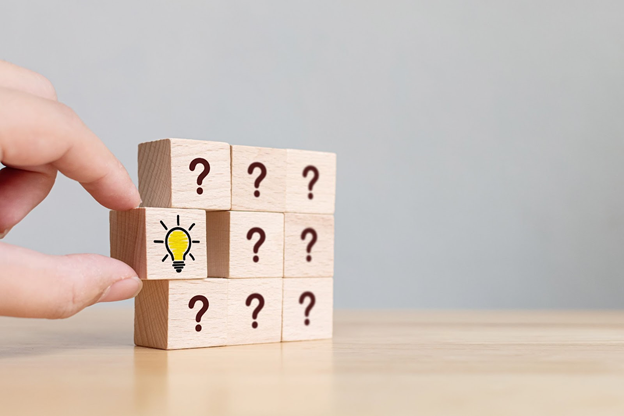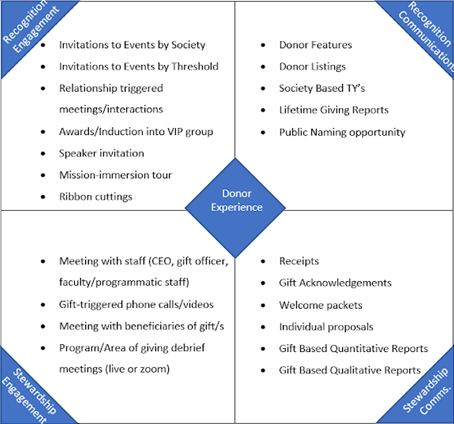- About
- Membership
- Resources
- Partner
- Events
- Awards & Scholarships
Donor Relations: It’s Not a Phase
Rebecca GeragosianDirector, Stewardship and Donor Relations Combined Jewish Philanthropies (CJP)
Photo Credit: Adobe Stock When I began my career, “stewardship” and “donor relations” (used interchangeably) were referred to as phases — stopping points along a linear donor journey somewhere between one gift and the next. In other words: the strategies, actions, and tactics were transactionally implemented. These phases were triggered by a gift. Those of us in donor relations and stewardship toiled over creating an annual cycle of stewardship touches meant to engage and inform donors about their gifts. Narrowly focusing on stewardship activities and actions in a vacuum (in the context of one year or transaction by transaction), we were wrongly assuming that together these actions created a cohesive donor experience.
Toward a Relational Donor Experience Philanthropy has evolved in the last several decades, and so too must donor relations. Donor relations is a long game. We must plan for long-term success, not just focus on annual activity. It’s necessary to focus on the relationship, not just the transaction. And we must recognize that a win today does not guarantee a win tomorrow if we are not tending to the relationship. In the end, a donor's relationship with the organization is the prize, the goal, and the thing we should strive to celebrate. Knowing that is one thing but implementing it in our work is another. This is especially difficult given our inclination in philanthropy to measure our outputs, donors, and dollars on an annual basis. The fruits of our labor might not be realized for years but are no less important than annual monetary fundraising goals. How can you make this subtle but important shift in your work and balance annual activity with long-term relationship building? While we need to continue some of the short-term touches — especially where we are beholden to donor agreements and accountability — we must also intentionally include recognition and stewardship opportunities outside of and in addition to those annual, cyclical, transaction-based activities. I have also used this shift in thinking to inform how I view stewardship and recognition and the entire donor relations umbrella. It forced me to reconsider what recognition is and can be. What does a relational donor experience look like, and how might it be different from a transactional donor experience? My colleagues and I spent months inventorying the donor experience and asking ourselves these questions:
1) being aware
As a result of exploring these questions, we expanded our relational donor experience landscape and accepted that our efforts in donor relations must tie together an integrated engagement and communications strategy that helps us achieve our stewardship and recognition goals. The Donor Relations Tent
I think of donor relations as a big tent, the donor experience being the tallest, central tent pole. In each corner, the donor experience is supported by integrated stewardship, recognition, communications, and engagement opportunities. (Note: this is inspired by the Leadership Tent theory in Zenger and Folkman's The extraordinary leader: Turning good managers into great leaders.) Following this visual a little further, if either of the four tent poles is missing or too small, the entire tent is at risk of collapse. A balanced donor experience includes all these things, and they are part of the whole, not siloed activities. It might look something like this: What makes the donor’s experience special is customizing which activities you draw on from each category based on your knowledge of donors. For example, donors who value peer-to-peer recognition for their gifts will find value in group recognition — such as a society complete with events and honor rolls where they can see and be seen amongst their philanthropic peers — whereas other donors might prefer public recognition in the form of a donor feature or naming opportunity, and yet others might prefer one-to-one private recognition. Many individual tactics can be dreamed up and tailored to donors, both individually and in groups, for each area of this quadrant. There is, intentionally, a lot of cross-over, as many activities do not fit neatly into one square. Whatever activities you choose, a donor’s experience should be infused with recognition and stewardship at every stage, whether they are attending an event or receiving a report. We in donor relations are responsible for making sure that recognition and stewardship are present throughout a donor’s experiences and communications with our organization, which may mean collaborating with your colleagues on other teams. For example, perhaps a donor helped organize a benefit auction and also made a donation at the auction event. In addition to the obligatory acknowledgment letter, what other ways could you recognize the donor’s leadership and time? Perhaps your communications team could create a behind-the-scenes feature about the auction that spotlights the donor’s volunteer work. The possibilities are endless. Final Thoughts Donor relations is not a phase. We should focus on the donor relationship at every stage and step along the way and infuse each interaction with gratitude and recognition. As we satisfy annual/cyclical/transactional needs, our tent quadrant model helps to ensure that we also build in touchpoints that move the donor along in their relationship with us. Don't wait for a stewardship piece or donor recognition event to acknowledge your donors' contributions in both time and treasure. Acknowledging that you are aware of the breadth and depth of their support and impact is a major step toward a relationship where donors feel known and valued. There will be significant milestones not only for donors’ philanthropic giving, but also in their relationship with your organization — remember this and recognize both often. ----
In 2022, we would love to hear your voice and benefit from your experience, so please consider submitting an article to The Hub! |



 The problem with this approach is that it does not necessarily reflect how donors view their relationship with us, which, like personal relations, is a living, breathing, ever-evolving thing. Their philanthropy is not necessarily tied to our fiscal year calendar. Something gets lost when we recognize them for their annual support but fail to recognize the breadth and depth of the many ways they have supported the organization. They might still consider themselves loyal as a donor and supporter of the organization even if we categorize them as a LYBUNT (gave Last Year But Not This) or SYBUNT (gave Some Years But Not This). Recaptured donors may feel confused or unseen if we use the phrase "Welcome Back" when communicating with them. And while accountability regarding gift use is important and worthy of our attention, an annual snapshot doesn’t tell the whole story. They also want to hear about the long-term impact of those gifts — the collective, cumulative impact of their gift(s) after 5 or 10+ years.
The problem with this approach is that it does not necessarily reflect how donors view their relationship with us, which, like personal relations, is a living, breathing, ever-evolving thing. Their philanthropy is not necessarily tied to our fiscal year calendar. Something gets lost when we recognize them for their annual support but fail to recognize the breadth and depth of the many ways they have supported the organization. They might still consider themselves loyal as a donor and supporter of the organization even if we categorize them as a LYBUNT (gave Last Year But Not This) or SYBUNT (gave Some Years But Not This). Recaptured donors may feel confused or unseen if we use the phrase "Welcome Back" when communicating with them. And while accountability regarding gift use is important and worthy of our attention, an annual snapshot doesn’t tell the whole story. They also want to hear about the long-term impact of those gifts — the collective, cumulative impact of their gift(s) after 5 or 10+ years. Like many, I learned that donor relations consists of four pillars, and those pillars change slightly depending on who you listen to and learn from. I decided to build a variation on this theme based on the needs I noticed — both donors’ needs and wants as well as inter-departmental needs. For my purposes, I decided to place traditional activities from those four traditional pillars (see
Like many, I learned that donor relations consists of four pillars, and those pillars change slightly depending on who you listen to and learn from. I decided to build a variation on this theme based on the needs I noticed — both donors’ needs and wants as well as inter-departmental needs. For my purposes, I decided to place traditional activities from those four traditional pillars (see 
